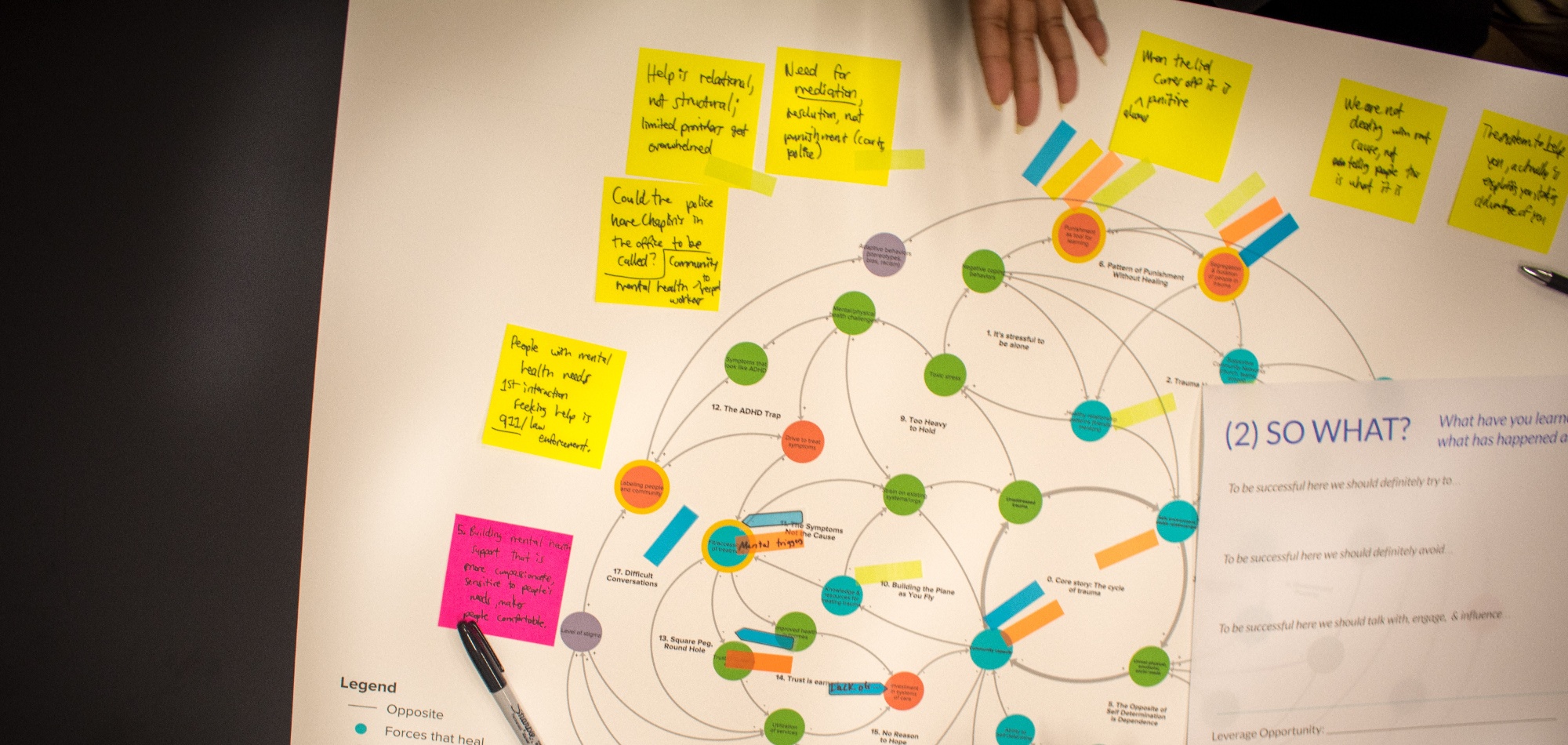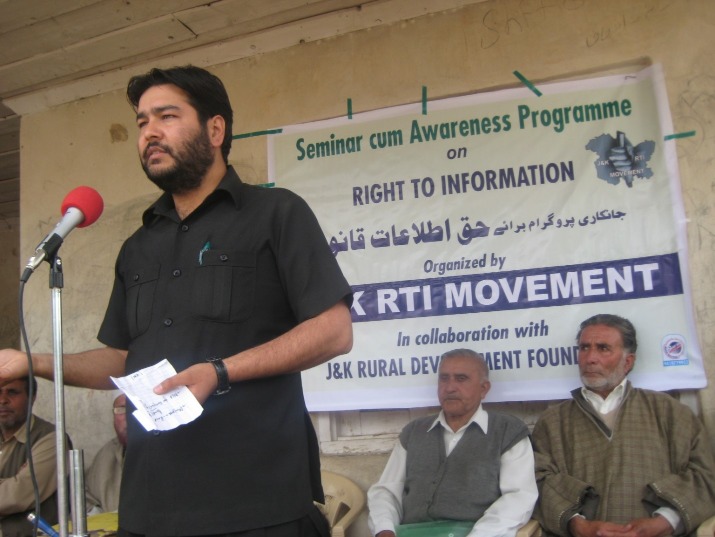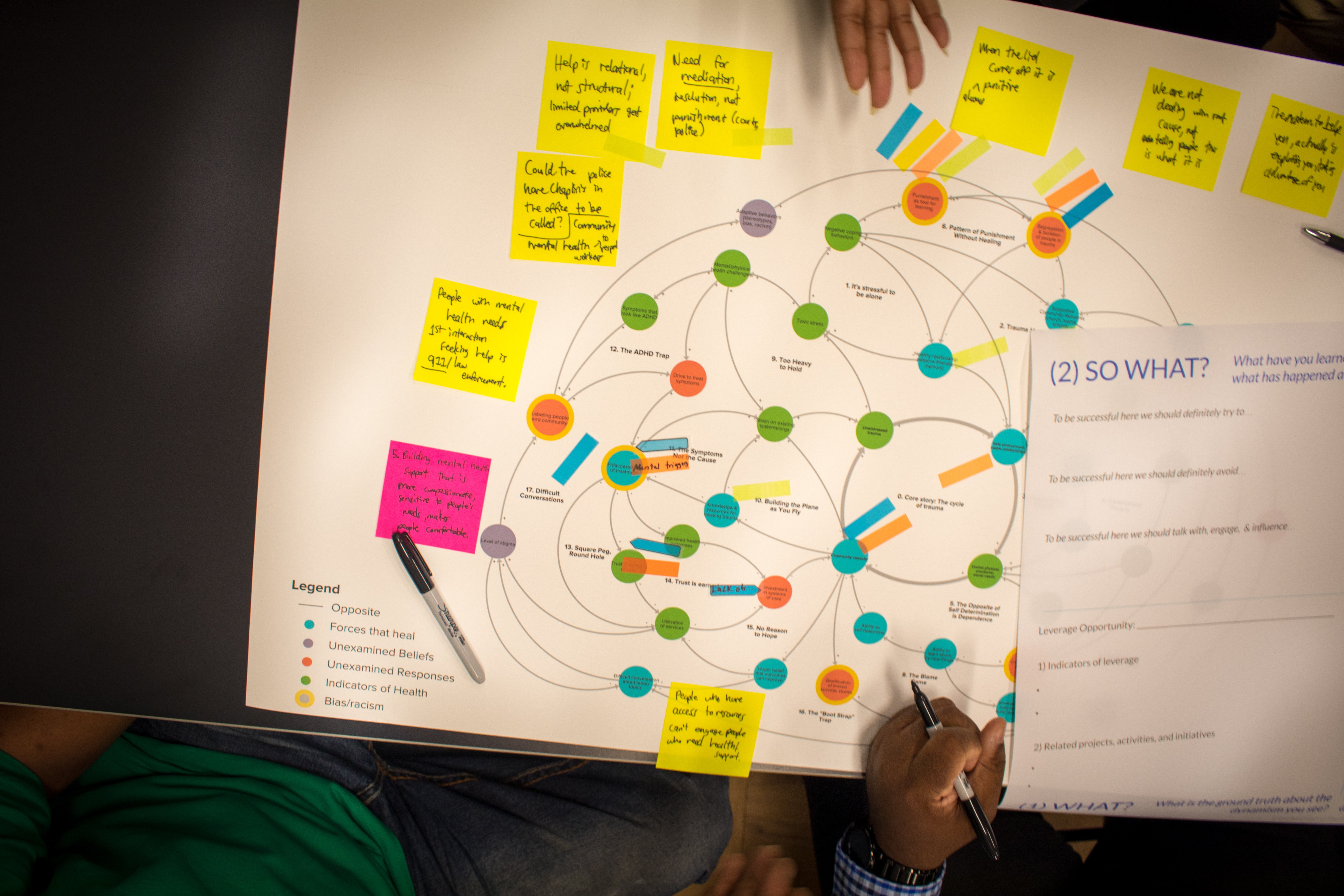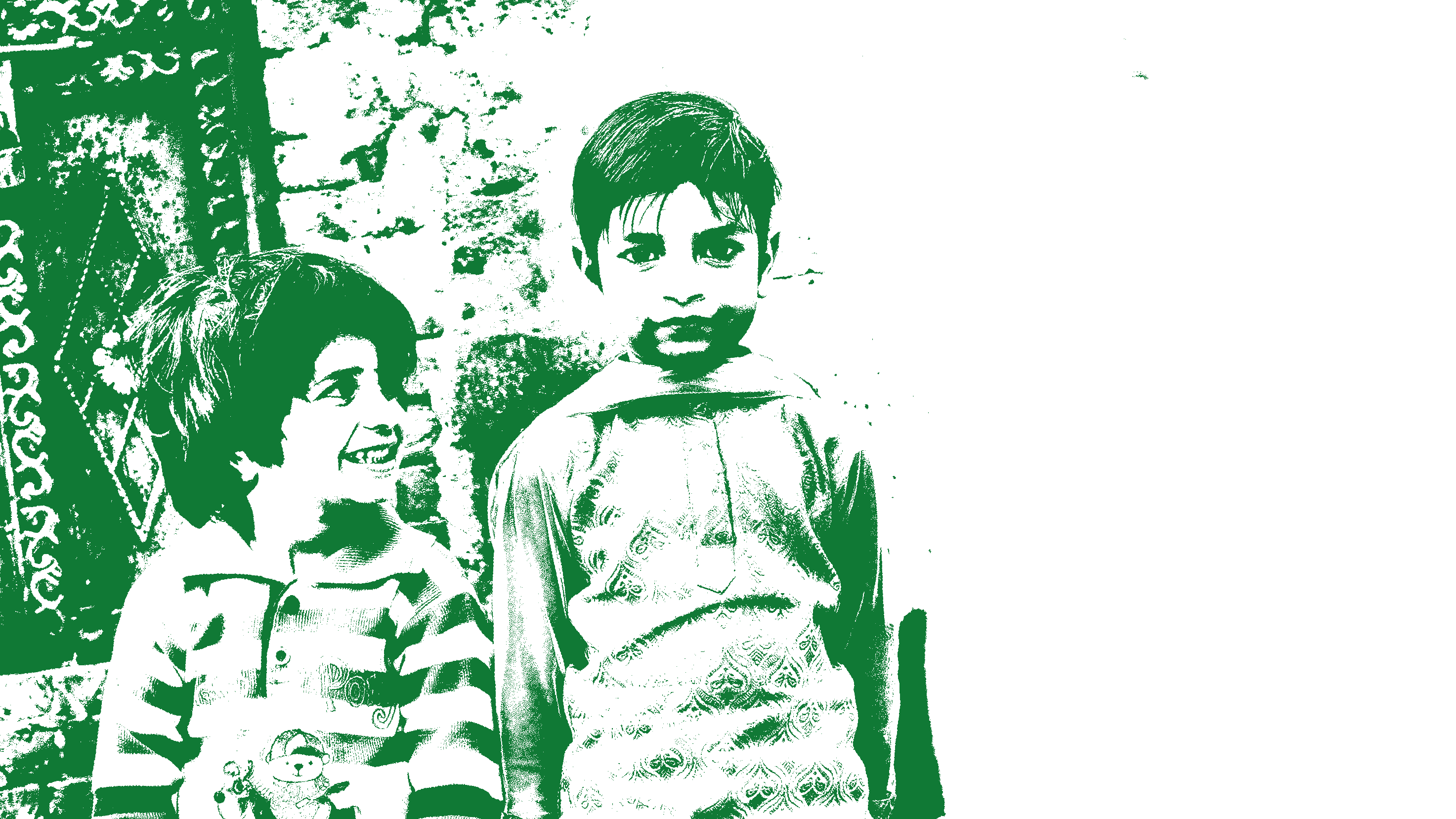Master Innovation
Using Systems Practice to Tackle Difficult Problems in Complex Environments
Learn how a systems approach can help you unite a community around an issue, map a system for change, and design a strategy to shift the status quo.
19 minutes
“I used to take baths and swim in the river when I was a kid. Now, when my son comes with me, he’s not able to swim in it because it’s so dirty. When my son goes there when he is my age, it will be a cesspool.”
Compelled to take action, Acumen India Fellow Raja Muzaffar Bhat started writing to shed light on the scars poor environmental management was leaving on his beautiful country. He penned over 60 articles on waste management alone.

It will take all of us to make things right for those who have too long been excluded from opportunity. In our inter- connected world, developing an understanding of our shared humanity has become a critical skill, one upon which our shared future ultimately depends.
Natalia León
Acumen Colombia Fellow
Why think about systems change?
The Omidyar Group explains the challenges in trying to solve complex problems and how systems thinking can help:
Watch Now
Close
Have you ever found yourself facing an issue where the seemingly straightforward solution didn’t bring about the results you expected?
Rob Ricigliano of Omidyar Group describes an example of when a clear-cut solution exacerbated the problem instead of solving it:

Watch Now
Close
1. You’re in a complex environment:
- People tried implementing solutions that should have worked but didn’t
- Problems keep morphing
- It feels like you can’t keep up with the pace of event
2. The nature of the goal is complex:
- The current goal of work is to go deeper than a band-aid solution
- Technical solutions (straightforward blueprint fixes) aren’t sufficient
3. You are in an enabling environment:
- You’re in a position to step back and conduct an analysis
- You have the capacity to dedicate time and/or resources prior to implementing a solution
Rob Ricigliano of Omidyar Group describes the three criteria in more detail in this video excerpt from the Acumen Academy Systems Practice course:

Watch Now
Close
From the field: Acumen Fellows share what systemic change means to them
We jump into action with the communities, but systemic change is also about thinking and analyzing the real challenges of a system. It’s understanding the difference between what we can solve in a technical way and what is more adaptive. For me, it’s getting to the root of the problem and solving it from there.
Natalia León, Acumen Colombia Fellow
Benefits of taking a systems approach
A systems approach brings multiple stakeholders together to rally around a shared story and unite around a common purpose to drive change.
For stakeholders, the approach removes blame, builds a shared understanding of the issue at hand, and illuminates next steps for shifting the status quo for the better.
Systems language provides an alternative to the blame game
From the field: Acumen Course Taker Uses Systems Practice for Peacebuilding
Rob Ricigliano of Omidyar Group describes how system mapping frees people from blame in this video excerpt from the Acumen Academy Systems Practice course:

Watch Now
Close
Systems practice builds a new shared understanding of the problem
Mapping the system illuminates next steps
How to drive change within a system
Acumen Colombia Fellow, Natalia León, is streetfootballworld’s Regional Manager & Head of Partnership for Latin America. In this role, she brings together organizations across Latin America who are using football as a tool for change across issues ranging from education to peacebuilding. The goal is to map the region and bring regional solutions to global problems.
Natalia partners with the top football organizations in the world, including FIFA, to bring reconciliation and peace building from the pitch into the community. One example is a project called Football for Emergency Response, which uses football as a tool for restitution of human rights for migrants in Latin America. In partnership with football players and humanitarian aid organizations, this project offers much needed relief in refugee camps, inspiring migrants to play again and reducing overall tension and sexual abuse in the camps.
With Natalia’s work as an example, let’s examine the four fundamental steps of systems practice that every change-maker should consider.
#1 - Scope and frame the system under investigation
- A Guiding Star: the vision of your desired future state of the system
- A Near Star: the 5-10 year outcome that makes significant progress toward the guiding star), and
- A Framing Question: the question that will help your team focus efforts to understand the system that you are going to engage
#2 - Bring the community together to map the system

Watch Now
Close
Systems mapping can be used to help stakeholders build a visual picture of the relationship and interdependencies beyond the boundaries they normally assume.... Tools that help foster reflection and generative conversation are aimed at enabling groups to slow down long enough to ‘try on’ other people’s viewpoints regarding a complex problem.
Peter Senge, Hal Hamilton and John Kania
in “The Dawn of System Leadership”
#3 - Identify opportunities for leverage
- Where are there parts of map that are frozen (i.e. parts where change is unlikely to happen any time soon)?
- Where is there pent up energy for change in the system (i.e. people have energy for change but there is a blockage)?
- Where are there bright spots (i.e. positive examples where there is something happening that goes against the trend)?
- Where is there a mixed bag impact on the system (i.e. there are both positive and negative forces at play)?
- Where do you see potential for ripple effects (i.e. elements that are highly interconnected with other parts of the system where if we were successful moving it, it would have ripple effects)?
Rob Ricigliano of Omidyar Group describes how to identify opportunities for leverage in this video excerpt from the Acumen Academy Systems Practice course:

Watch Now
Close
If you haven’t guessed by now, streetfootballworld found a powerful point of leverage in the sport of football.
Football is a passion shared across borders - immune to barriers of race, language, gender and age. streetfootballworld uses a variation of the traditional football match called football3, where three halves - a pre-match discussion, a football game, and a post-match discussion - and zero referees transform the game into a vehicle for inclusion, equality and teamwork.

Watch Now
Close
The football3 methodology has been used to bring discussion to tackle challenges around gender equality, social integration, peacebuilding, civic engagement and much more.
#4 - Design a strategy and be open to learn and adapt as you implement
“Good strategy takes a stance. It has explicit hypotheses. It asks ‘what is really going on here?’ It plans for ways to fail safe and admits uncertainties. It lays out coherent actions that focus on shifting a few critical dynamics. And it should be simple enough for those who aren't experts to follow...We should take the simplicity of our resulting strategy as a sign that we've embraced the complexity, understood it, and found a few key leverage points where we actually have a shot at making an impact.”
-Jeff Mohr, CEO of Kumu.io
Natalia’s football network is clear that they come together for support, not necessarily to change the way they’re working. They thrive on face-to-face meetings and make a point of syncing meetings up alongside high-profile football matches. They form task forces for specific topics in need of further exploration, such as the migration task force focused on supporting the refugee migration crisis in Latin America, as the need arises.
We have annual meetings within the regions where we create our regional strategies connected to a global strategy where we really want to change the game at a global level.
From the Field: Implementing Systems Change through Activism
Learn more about Muzaffar’s story in the video below.

Watch Now
Close

RURAL OPPORTUNITY INSTITUTE TAKING A SYSTEMS APPROACH
ENGAGING THE COMMUNITY
BUILDING A SYSTEMS MAP
BUILDING A LEVERAGED STRATEGY
#2 - Heal through shifting practices and habits to create less punishment
#3 - Connect people to each other, and to meaningful education, employment, and leadership opportunities
OUTCOMES OF A SYSTEMS APPROACH
Next steps
Take these parting words from Rob Ricigliano of Omidyar Group to inspire your next steps:

Watch Now
Close
- Acumen Academy's free course on System Practice
- streetfootballworld's online resource library
- Transforming a Fishing Community In Mexico through Systems Thinking
- How Systems Practice is Impacting Colombia’s Peace Agreement
- Facilitating Behavior Change in Complex Waste Management Systems
- A Systems Practice resource round-up article
Discover more
Sign up to our newsletter
I have read and accept the Terms & Privacy


